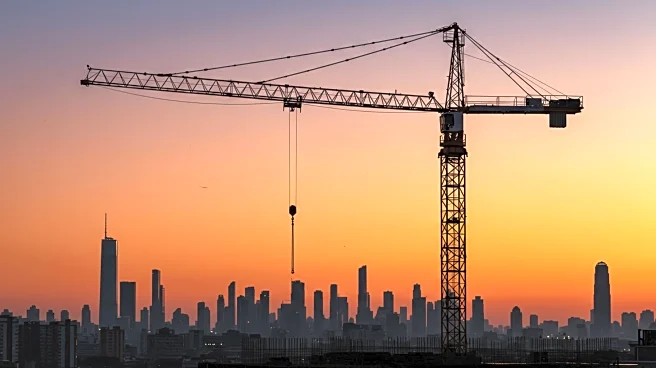What's Happening?
Texas is experiencing a significant boom in retail real estate construction, driven by a positive net domestic migration and expanding population in its major cities, including Dallas, Houston, Austin, and San Antonio. According to data from Colliers, Texas recorded a net domestic migration of 0.9% between January 2021 and January 2025. By early 2025, over 17 million square feet of retail space was under construction in Texas, contrasting with the national landscape where construction activity remains historically low. Houston, the largest city in Texas, issued 11,000 building permits in the first two months of 2025, more than any other U.S. market. The retail market fundamentals in Texas remain healthy, with vacancy rates within the historical 5-6% range, supported by consistent leasing activity, stable rents, and a development pipeline totaling 3.6 million square feet.
Why It's Important?
The retail construction boom in Texas highlights the state's growing economic influence and attractiveness to businesses and consumers alike. This trend is significant as it contrasts with the national retail construction landscape, which remains sluggish. The expansion in Texas is fueled by its rapidly growing population, rising household incomes, and robust consumption patterns, making it a prime location for retailers looking to expand. The healthy market fundamentals, including low vacancy rates and stable rents, suggest a strong demand for retail space, which could lead to increased economic activity and job creation in the region. This development may also influence national retail strategies, as companies might prioritize Texas for new store openings and investments.
What's Next?
As Texas continues to lead in retail real estate construction, stakeholders such as developers, retailers, and policymakers will likely focus on sustaining this growth. Retailers may increase their presence in Texas to capitalize on the expanding market, while developers might seek to accelerate construction projects to meet demand. Policymakers could consider infrastructure improvements to support the growing population and business activities. Additionally, other states may analyze Texas's strategies to boost their own retail construction activities, potentially leading to a shift in national retail trends.
Beyond the Headlines
The retail boom in Texas may have broader implications for urban planning and environmental considerations. As construction intensifies, there could be increased scrutiny on sustainable building practices and the impact on local ecosystems. The influx of new residents and businesses might also necessitate enhancements in public services and transportation networks to accommodate growth. Furthermore, the concentration of retail development in Texas could influence cultural and social dynamics, as diverse communities continue to evolve and interact.

